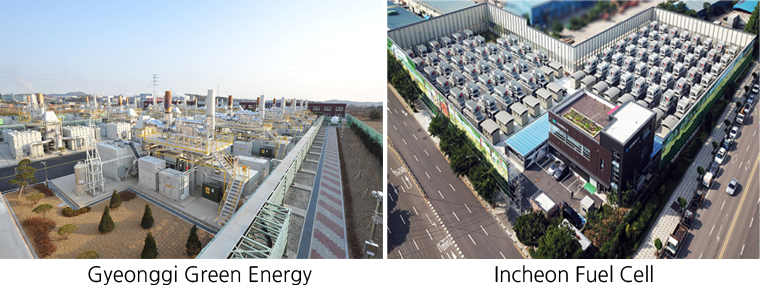With features such as convenience, cleanliness, and safety, city gas has been used extensively by households and industries
Since 2012, it has been mandatory for power generation companies of a certain size (500MW) or larger to supply more than a certain percentage of total power generation using renewable energy.
As the Hydrogen Act was amended on December 11, 2022, the system was changed from the existing RPS market to the CHPS market. The CHPS system was established to separate hydrogen power generation and promote the use of clean hydrogen to compensate for the shortcomings of the RPS system. To implement the system, a hydrogen power bidding market has been opened since 2023, and the Korean Electric Power corporation operates and opens it.
The hydrogen power bidding market is based on the hydrogen law as a system to purchase and supply electricity produced by hydrogen or hydrogen compounds as fuel. As announced by the purchaser, Korea Electric Power Corporation, and the Ministry of Trade, Industry and Energy a regional electricity business, hydrogen power must be purchased, and the supplier, the hydrogen power business, supplies hydrogen power to the buyer through a competitive bid for the purchase. The bidding market will open once a year, with a volume of 1,300 GWh (almost 160MW) opening as of 2023. The final winner is selected by comprehensively evaluating non-price indicators such as price indicators, which are power generation costs, the impact of the electricity system, and industrial and economic contributions.
| Project | Capacity | Year of Completion |
Location |
|---|---|---|---|
| Gyeonggi Green Energy | 58.8MW | Dec. 2013 | Hyangnam-eup, Hwaseong-si, Gyeonggi-do |
| Korea South-East Power | 2.64MW | Nov. 2014 | Wonsi-dong, Ansan-si, Gyeonggi-do |
| S-Power | 5.0MW | Jan. 2015 | Iljik-dong, Gwangmyeong-si, Gyeonggi-do |
| Baegot Fuel Cell | 6.16MW | Jun. 2017 | Jeongwang-dong, Siheung-si, Gyeonggi-do |
| Gwangmyeong Fuel Cell | 2.64MW | Nov. 2017 | Iljik-dong, Gwangmyeong-si, Gyeonggi-do |
| Oseong Fuel Cell | 9.68MW | Feb. 2019 | Oseong-myeon, Pyeongtaek-si, Gyeonggi-do |
| Daebudo Fuel Cell | 0.88MW | Nov. 2019 | Daebudong-dong, Ansan-si, Gyeonggi-do |
| SE Green Energy | 19.8MW | Jun. 2020 | Jangan-myeon, Hwaseong-si, Gyeonggi-do |
| Korea District Heating Corp. Future Development Center | 0.1MW | Feb. 2021 | Giheung-gu, Yongin-si, Gyeonggi-do |
| Namyang Fuel Cell (Phase 1) |
20.24MW | Jun. 2021 | Namyang-eup, Hwaseong-si, Gyeonggi-do |
| Incheon Fuel Cell | 39.6MW | Jun. 2021 | Songnim-dong, Dong-gu, Incheon Metropolitan City |
| Uiwang Fuel Cell | 9.9MW | Aug. 2021 | I-dong, Uiwang-si, Gyeonggi-do |
| Baran Management Office, Korea Gas Corporation | 0.88MW | Aug. 2022 | Hwaseong-si, Gyeonggi-do |
| Incheon Sports Training Center | 0.1MW | Oct. 2022 | Jung-gu, Incheon Metropolitan City |
| Namyang Fuel Cell (Phase 2) | 19.8MW | Feb. 2023 | Hwaseong-si, Gyeonggi-do |
| Pyeongtaek EnergyService | 6.16MW | Dec. 2023 | Pyeongtaek-si, Gyeonggi-do |
| Total | 202.38MW | ||

Samchully Co., Ltd. will expand the fuel cell business, in addition to supplying eco-friendly heat produces from fuel cells to integrated energy suppliers and discovering new and renewable energy business models in various fields, such as waste-to-energy and biogas, in order to play a pivotal role in driving the hydrogen economy.